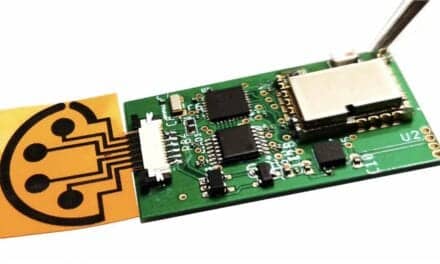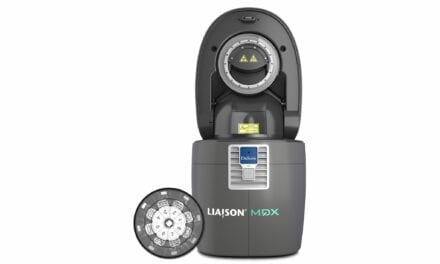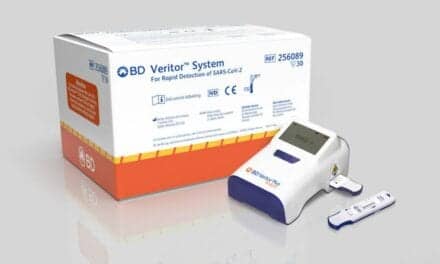A new study that could have immediate implications for COVID testing in schools found that with age-appropriate instructions, school-aged children can successfully use a nasal swab to obtain their own COVID test specimen. The study provides data to support recommendations regarding self-swabbing that can be implemented by schools and in other settings where children undergo COVID-19 testing.
The study was led by a team of clinical researchers at Emory University School of Medicine, Atlanta, and Children’s Healthcare of Atlanta and funded by the National Institutes of Health’s Rapid Acceleration of Diagnostics (RADx) Tech program.
“Having adults collect swab samples from kids is not a trivial matter in schools and other group settings,” says Bruce Tromberg, PhD, director of the National Institute of Biomedical Imaging and Bioengineering (NIBIB) and lead for RADx Tech. “The study data may surprise some and will reassure others that children as young as 4 years old can follow simply presented instructions and collect their own nasal specimen for COVID-19 testing.”
Details of the Study
The team conducted their study in July and August 2021 at sites in the Atlanta area, enrolling 197 children with symptoms of COVID. Prior to self-swabbing, they showed the children a short (90-second) how-to video designed for a young audience and provided a handout with written instructions and pictures. The children then proceeded to swab their noses—four rotations of the swab against the inside of each nostril approximately one centimeter deep. Next, the health care worker used a second swab to collect a sample by swabbing each nostril of the individual children. All samples were then submitted to a clinical laboratory for PCR analysis.
The self-collected swabs and those collected by a health care worker agreed 97.8% of the time for a positive result and 98.1% of the time for a negative result. The analysis showed that both collection methods identified the 44% of symptomatic kids who were positive for COVID-19.
“Seeing how closely the results line up between the children and trained health care workers is a strong indicator that these age groups are fully capable of swabbing themselves if given proper instruction,” says Jesse Waggoner, MD, an assistant professor of Infectious Diseases with the Emory University School of Medicine and one of the lead authors on the study.
A higher percentage of children 8 and under needed assistance, such as more instruction before correctly completing self-collection—21.8% compared to 6.1% for children older than 8—but SARS-CoV-2 detection among the two age groups did not differ.
The study, published in the Journal of the American Medical Association, offers data that are available to COVID test manufacturers when submitting applications to the U.S. Food and Drug Administration for diagnostics emergency use authorization (EUA).
The NIH-supported RADx Tech Testing Verification Core provided the data late last year, where it subsequently has been referenced by manufacturers in support of EUA for their COVID-19 PCR diagnostic tests. Prior to this study, the FDA had not authorized COVID-19 tests with self-swabbing by children under age 14. Several co-authors from the FDA were advisors on the study design and this study is one example of the unprecedented collaboration between the NIH and FDA during the pandemic.
“Pediatric self-swabbing will support expanded testing access and should make it even easier to test school age populations with fewer resources,” says Tim Stenzel, MD, PhD, director of the Office of In Vitro Diagnostics at FDA. “This study furthers our knowledge of test accuracy with these types of samples and provides test manufacturers with data to support their EUA requests to the FDA.”
Benefits of Self-Testing
Longstanding medical practice has been to have a health care worker collect samples for respiratory tract infection testing. However, that scenario is challenging when repeat testing of children is required in school or in other group settings that are less likely to have trained health care workers available to collect samples. Student self-swabbing—even when samples are sent off-site for analysis—could reduce the onus on school staff. The self-swabbing study evolved out of discussions among researchers at the RADx Tech Testing Verification Core in Atlanta with the NIH RADx Tech program and at the FDA about gaining data to understand at what age children can perform self-swabbing.
“Every minute of a health care worker’s time is at a premium,” says senior author Wilbur Lam, MD, pediatric hematologist and oncologist at Aflac Cancer and Blood Disorders Center of Children’s Healthcare of Atlanta, professor at the Emory University School of Medicine Department of Pediatrics and at the Wallace H. Coulter Department of Biomedical Engineering at the Georgia Institute of Technology and Emory University, and Program Director of the Georgia Clinical and Translational Science Awards Program Hub Innovation Catalyst Program. “Why not allow a kid to self-swab? It’s a win-win! They would rather do it themselves and it frees up the health care worker to do other things.” He added that while the study paves the way for lab-based test developers to add self-collection by 4 to 14-year-old children, end-users should follow a given device’s instructions for use.
This research was supported by funds from President Biden’s American Rescue Plan though the National Institute of Biomedical Imaging and Bioengineering at the National Institutes of Health (U54 EB027690-03S1 and U54 EB027690-03S2) and also from the National Center for Advancing Translational Sciences (UL1 TR002378), both parts of the National Institutes of Health





